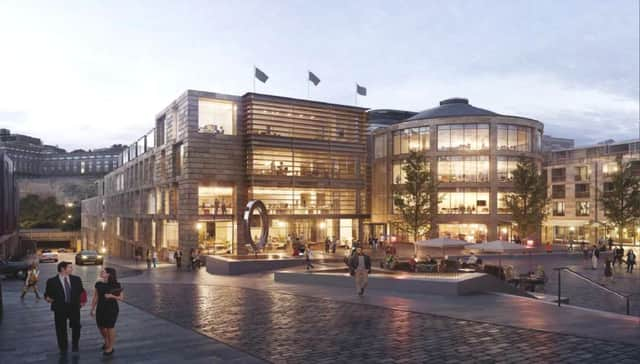Scotland firmly on international investors' radar


Edinburgh’s largest-ever office deal concluded, with Legal & General purchasing the new 190,000sq ft HMRC offices at New Waverley from Artisan Real Estate Investors.
This was quickly followed by the sale of Saltire Court in Castle Terrace.
Advertisement
Hide AdAdvertisement
Hide AdThe 180,000sq ft building was sold by the Abu Dhabi Investment Authority for £71 million, to private Saudi Arabian investor Al Rashid.
In Glasgow, the 172,000sq ft St Vincent Plaza traded for a reported £70m.
These deals are a culmination of business that has been going on behind the scenes for some time now.
While “uncertainty” might have been Scotland’s leitmotif in recent years, levels of activity and transaction volumes have remained solid. In fact, Edinburgh’s four largest office transactions since records began have concluded in the past 36 months.
Yet, as attention-grabbing as big numbers might be, it’s not always the full story.
Instead, some interesting dynamics have emerged in Scotland’s commercial property market, leading to UK funds moving up the risk curve towards assets with higher yields in locations beyond prime areas.
A number of the deals completed in 2017 illustrate this trend in action.
Around this time last year, several Grade B multi-let buildings in Edinburgh were struggling to attract interest: Silvan House, the Tun, and Orchard Brae House to name a few.
Advertisement
Hide AdAdvertisement
Hide AdAll of these properties traded in 2017, with UK money picking them up for yields between 7 and 8 per cent.
They underline that something fundamental has changed in the market – and the answer lies in what has happened to the evolving buyer profile in Scottish commercial property over the past two or three years.
Our analysis of transactions from 2016 showed that international investors accounted for around two-thirds of investment in Scotland. It’s likely to remain at similar levels for 2017, with figures from the first half of the year indicating they were behind 60 per cent of investment volumes in Edinburgh and 41 per cent in Glasgow.
In fact, it is interest from across the world that has buoyed the market in recent years, while UK funds focused elsewhere.
Now that the latter are looking north of the border again, it has created a strong pool of buyers – particularly for prime assets with a single let and low asset management requirements.
However, it’s not a level playing field. Overseas investors have a couple of advantages over their UK counterparts: a weak pound and, often, lower requirement for returns.
That has seen them strike deals on some of Scotland’s top commercial properties for yields of around 5 per cent.
While they have been behind many of the biggest deals, the sweet spot for them tends to be between £20m and £40m. This is a ripple effect that has been years in the making.
Advertisement
Hide AdAdvertisement
Hide AdNow that we are well into 2018, we could start to see yields begin to sharpen and even more interest in the Grade B market.
Increasingly aggressive bidding across the board looks set to push property investors further up the risk curve for some time yet.
Alasdair Steel is head of Scotland commercial and Knight Frank.